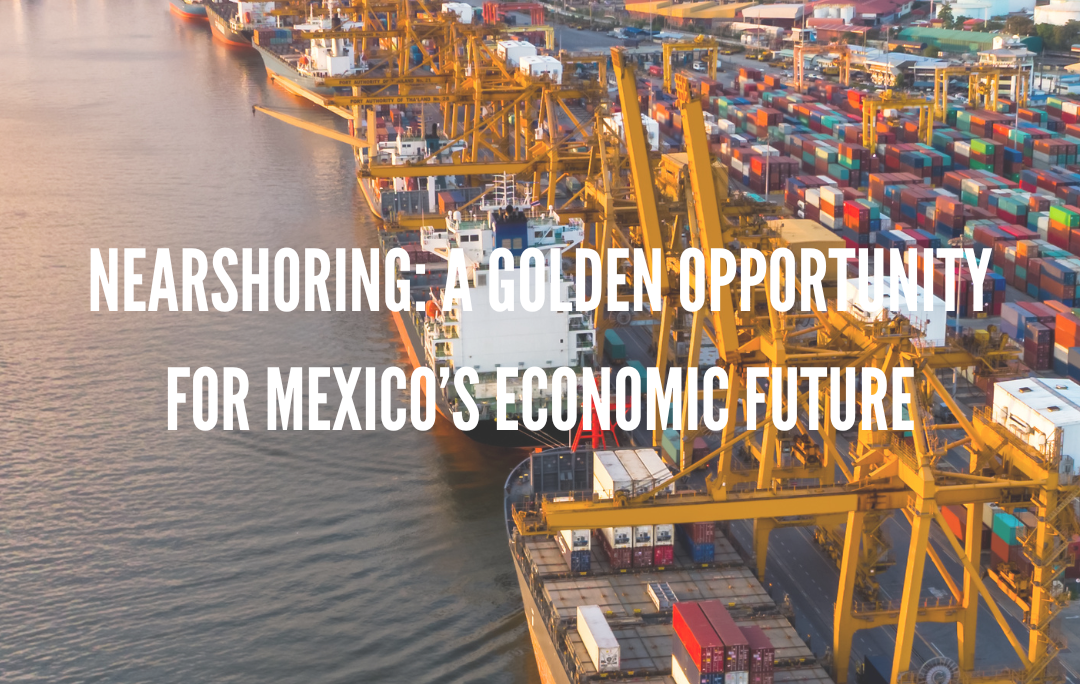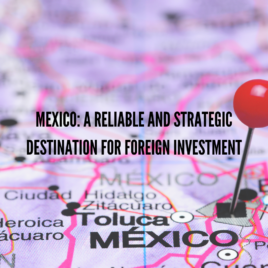As geopolitical tensions between the U.S. and China continue to rise, American industries have begun reassessing their supply chains, especially given the disruptions experienced during the pandemic. This shift has given rise to “nearshoring,” a trend where companies bring manufacturing closer to home. For the U.S., this has meant a renewed focus on Mexico, offering immense potential for both countries. The movement represents a pivotal economic opportunity for Mexico, which could establish itself as a manufacturing powerhouse while benefiting from its proximity to the world’s largest consumer market.
Why Mexico?
Mexico offers significant advantages for manufacturers looking to shift production closer to the U.S. Labor costs are substantially lower than in the U.S., providing cost-effective manufacturing options. Additionally, Mexico’s geographic location grants manufacturers easy access to American markets, cutting down on transportation times and reducing supply chain vulnerabilities. The country’s favorable trade agreements, particularly the US-Mexico-Canada Agreement (USMCA), further enhance its appeal as a destination for nearshoring.
However, the benefits go beyond manufacturing. Nearshoring presents significant opportunities for infrastructure development in Mexico. With increased demand for production facilities, the need for energy and transportation networks has skyrocketed. Investors are eyeing industrial properties, energy infrastructure, and logistics centers to support the growth of new factories. According to Simon Hanna, CEO of FIBRA Macquarie Mexico, the country’s industrial sector is already seeing high occupancy rates and rising rental values. Key industries like electric vehicles, electronics, and medical devices are driving this demand, which creates further opportunities for investment.
Challenges to Overcome
Despite the excitement, nearshoring in Mexico faces several hurdles. One of the main challenges is the country’s infrastructure deficit. While the demand for manufacturing is on the rise, current power and transportation networks are struggling to keep pace. A recent report from the Baker Institute highlighted that Mexico will need to expand its capacity by 75% over the next 15 years to accommodate the nearshoring boom. Addressing this infrastructure gap is crucial if Mexico wants to seize this opportunity fully.
Another factor is political uncertainty. While President Andrés Manuel López Obrador (AMLO) has made headlines for canceling major infrastructure projects, incoming president Claudia Sheinbaum is seen as more pragmatic. Nevertheless, investors remain cautiously optimistic, as Mexico has proven to be an attractive destination for those with long-term visions. Actis partner Alberto Estefan emphasized that despite challenges, Mexico’s scale, demographic advantages, and investment-grade credit rating make it a compelling market for infrastructure investment.
The U.S. Perspective
While nearshoring presents an economic boon for Mexico, it’s not without controversy in the U.S. Some politicians and business leaders argue that manufacturing jobs should return to American soil instead of neighboring countries. Former President Donald Trump has expressed skepticism toward Mexico’s role in the U.S. supply chain, threatening tariffs on Chinese goods produced in Mexican factories. However, most political leaders agree that diversifying supply chains away from China is beneficial in the long term.
Once established, supply chains are not easily reversed. As Stonepeak’s senior managing director James Wyper points out, these are “big decisions undertaken over years and decades,” meaning that nearshoring is likely to remain a key element of U.S.-Mexico trade relations for the foreseeable future.
A Bright Future for Mexico
The nearshoring trend has created a unique moment for Mexico. While challenges remain—such as infrastructure gaps and political uncertainties—Mexico’s geographic location, low labor costs, and strong trade agreements positions it as an ideal hub for manufacturing industries. With continued investment in infrastructure and favorable political policies, Mexico has the potential to solidify its role as a critical player in global supply chains.
As the U.S. continues to diversify its supply chain away from China, nearshoring in Mexico could prove to be one of the most promising economic strategies for the country’s long-term growth. The key will be for both private investors and government leaders to work together to create an environment where these opportunities can flourish.
REFERENCES:
- Payton, B., & Payton, B. (2024, 25 septiembre). Mexico seeks to capitalise on nearshoring bonanza. Infrastructure Investor. https://www.infrastructureinvestor.com/mexico-seeks-to-capitalise-on-nearshoring-bonanza/



